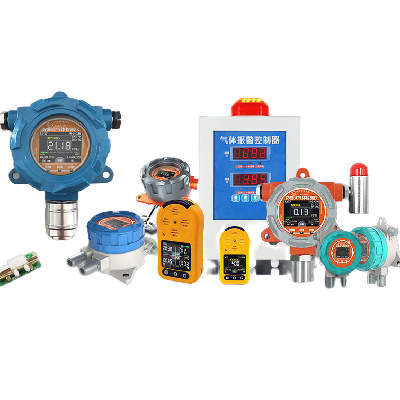In China, a gas detector is widely used in industrial and residential properties to ensure the safety of those who live and work in the space and the general public. Rely on gas detectors to provide adequate warning when dangerous gases are present. Specialized equipment for gas detection can take many forms to meet the unique needs of different gas monitoring applications.
So, how many types of gas detectors are there?
Australia’s leading team of gas detection specialists, Newcastle Safety Servicing, are here to break down and provide an informative guide on how many types of gas analyzers are there, the different types of gas analyzers and why they are used in various situations.
On top of delivering exceptional gas calibration services and repairs, Newcastle Safety Servicing also provide a number of gas detection devices from internationally recognised manufacturers. When it comes to gas detection, we’re your experts.

How Many Types of Gas Detectors Are There?
Regarding how many types of gas detectors are there; there are approximately eight different gas sensor technologies used to identify and monitor gas levels. Gas detectors can be characterised according to the operation mechanism, as various industrial applications generally call for unique gas detection safety systems. In this article, we’ll be discussing the four main types of gas sensors: electrochemical sensors, catalytic sensors, infrared sensors and photoionization sensors.
Essentially, these various types of gas detectors fall into two categories: portable and fixed. Portable gas detectors are typically handheld or worn on safety equipment and used to monitor personnel’s atmosphere. The detectors often emit warnings with audible and visual signals when dangerous levels of gases are detected.
Fixed gas detectors are monitoring systems that are generally mounted near the process area of a plant or control room, or in an area that requires protection, such as underground car parks. The detectors will typically make both visual and audible warnings when hazardous gases are detected and monitor the levels of more than one specific gas.
What Are the Types of Gas Detectors?
Now that we’ve explained how many types of gas detectors are there, here’s a run-down of the four main types of gas detector technologies utilised to detect harmful gases: electrochemical, catalytic bead, infrared and photoionization sensors. When making your gas detection selection within those types of gas detectors, it’s also vital to consider single gas detectors and multi-gas detectors.
1, Electrochemical Gas Sensors
Electrochemical gas sensors measure a specific gas’s concentration by oxidising or reducing the gas to an electrode, generating a positive or negative current flow. Electrochemical gas sensors are typically used to measure the concentration of a target gas within an external circuit. When considering how many types of gas sensors are there, electrochemical and catalytic combustible gas technologies are the most commonly used and understood.
2, Catalytic Bead Sensors
Catalytic gas sensors are typically used to measure combustible gases that come with an explosion hazard when concentrations are between the lower explosion limit (LEL) and the upper explosion limit (UEL). Catalytic gas sensors are based upon the principle that when gas oxidises, it produces heat, and the sensor will convert the temperature change via a Wheatstone bridge-type circuit.
One of the beads of the catalytic sensor consists of a special catalyst which promotes oxidation, and the other is treated to inhibit oxidation. Current passes through the coils to that they reach oxidation temperature (500 degrees Celsius), increasing the platinum coil’s resistance, leading to an imbalance of the bridge. The resistance change is directly related to the gas concentration in the surrounding atmosphere, displaying the gas reading on the meter or similar indicating device.
3, Infrared Gas Sensors
An alternative to combustible gas measurements, infrared gas sensors are used when there is no oxygen present, or in situations where you measure high carbon dioxide concentrations. Working on the principle of light absorption, the change in the absorbed light intensity is measured relative to the intensity of light at a reference wavelength. The infrared sensor computes the difference in absorbed light and reports the gas concentration from the absorption.
4, Photoionization Gas Sensors
A photoionization gas detector uses an ultraviolet light source to ionise gases to positive and negative ions that can easily be identified with a detector. Ionisation occurs when a molecule absorbs the light energy of a gas. The photoionization detects or measures the charge of ionised gases, with the charge being a function of the concentration of volatile organic compounds (VOCs) found in the atmosphere.